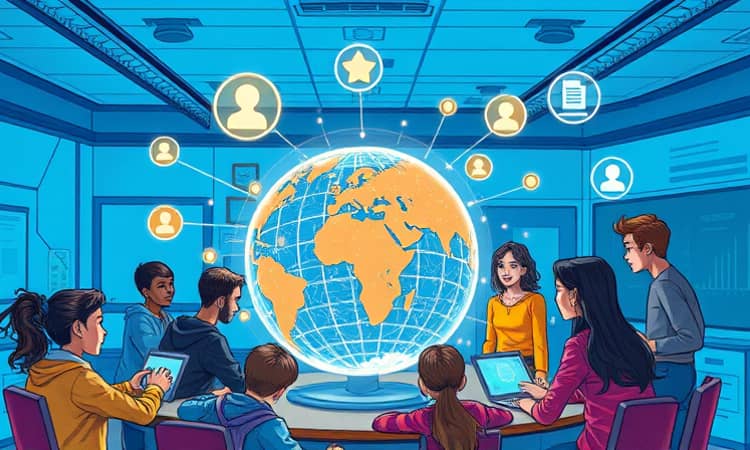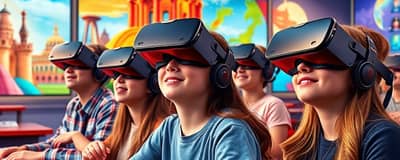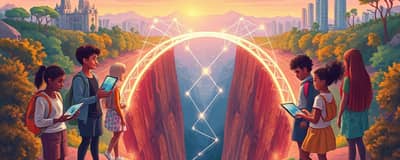In an era where screens mediate nearly every aspect of our lives, students must become fluent in the language of technology. Digital literacy is no longer a luxury—it’s a cornerstone of education and personal growth.
By equipping young learners with essential digital skills, we prepare them to navigate complex online environments, solve emerging challenges, and seize new opportunities.
Understanding Digital Literacy in a Modern Context
Digital literacy is more than basic computer skills or internet navigation. According to UNESCO, it encompasses confident and critical use of technology for information, communication, and problem-solving. UNICEF highlights knowledge, skills, and attitudes that allow children to flourish in an increasingly global digital world.
These definitions converge around three pillars: consuming information responsibly, creating digital content effectively, and communicating ideas with clarity and intention. Students who master these pillars can navigate, evaluate, and communicate information online with confidence and discernment.
This holistic understanding underscores that digital literacy is as much about mindset as it is about technical proficiency. Students learn to approach information with skepticism, ask probing questions, and seek out diverse perspectives. These habits foster resilient critical thinkers prepared for challenges in an ever-changing world.
Core Components of Digital Literacy
At its core, digital literacy encompasses a spectrum of skills that students must develop to thrive academically and professionally:
- Basic Skills: typing proficiency, file management, using productivity software, writing emails, saving and organizing documents, and effective search engine use.
- Advanced Skills: coding and programming, data analysis, cybersecurity awareness, assessing source credibility, collaborating with digital tools, practicing online safety, and protecting personal privacy.
By building a foundation of basic competencies, students gain the agility to explore more complex digital environments. Advanced skills then open doors to cutting-edge fields and foster a spirit of innovation.
Current Landscape and Persistent Challenges
Despite the importance of digital literacy, recent assessments reveal significant gaps. In the EU, an alarming 43% of students fail to meet basic digital skill benchmarks. This rate, while slightly better than the United States at 51%, lags far behind South Korea’s 27% underachievement. Without targeted interventions, these disparities risk widening the socioeconomic divide.
Beyond regional performance, challenges also emerge along socioeconomic and cultural lines. Students from affluent backgrounds often have greater access to technology and support systems, while migrant and linguistic minority students face additional barriers. Gender disparities persist as well: although girls outperform boys in digital assessments by nearly 8%, women represent just 20% of ICT specialists in the EU workforce.
Bridging the Digital Divide Through Education
Addressing these gaps requires a multifaceted approach within schools, families, and communities. Educators can foster equitable access and empower every student with practical strategies:
- Integrate digital tools into everyday lessons, making technology an organic part of learning.
- Embrace project-based learning that harnesses online resources for real-world problem-solving.
- Teach responsible digital citizenship, emphasizing respect, empathy, and ethical online behavior.
- Develop critical evaluation skills for online sources by engaging students in research projects that challenge them to verify information authenticity.
- Promote online safety practices and privacy protection through interactive workshops and simulations.
By embedding these approaches across subjects—from literature to science—students learn to wield technology as an extension of their creativity and intellect, not merely as a tool for consumption.
Empowering Creation and Communication
Creating digital content is a powerful means for students to express ideas, showcase talents, and connect with audiences worldwide. Encourage students to:
- Produce multimedia presentations incorporating video, audio, and interactive elements.
- Maintain digital portfolios that document growth, reflections, and achievements.
- Collaborate on blogs, podcasts, or social media campaigns to raise awareness on topics they care about.
Instructors can leverage accessible digital platforms and free software to democratize creation, ensuring that budget constraints never stifle imagination.
Through content creation, students learn to craft compelling narratives, adapt messages for different platforms, and develop a sense of ownership over their learning journey.
Preparing for a Technology-Driven Future
As workplaces evolve, digital literacy becomes not just an asset but a necessity. Employers seek candidates who can navigate complex digital ecosystems, analyze data, and safeguard information. By instilling adaptability and lifelong learning habits, educators equip students to pivot as new technologies emerge.
Moreover, digital skills bolster creativity—students who code can prototype inventions, while those adept at digital design can bring artistic visions to life. These interdisciplinary abilities drive innovation across fields, from healthcare and engineering to the arts and social impact.
The Path Forward: Continuous Evolution
Digital literacy is not static. As artificial intelligence, virtual reality, and blockchain reshape the landscape, educational strategies must evolve in parallel.
Schools should foster partnerships with technology organizations to expose students to emerging tools and real-world challenges. They can create mentorship programs linking students with industry professionals and offer ongoing professional development for teachers to master digital pedagogies and resources.
In the journey toward digital empowerment, every stakeholder plays a role. From parents modeling healthy screen habits to policymakers funding equitable infrastructure, collective action paves the way for tomorrow’s innovators. When students are armed with the skills to navigate, create, and communicate in digital realms, they not only secure their own success but also contribute to a more connected, informed, and compassionate world.
References
- https://www.edweek.org/teaching-learning/what-is-digital-literacy/2016/11
- https://pce.sandiego.edu/digital-literacy/
- https://www.learning.com/blog/what-is-digital-literacy-definition-and-uses-in-daily-life/
- https://literacy.ala.org/digital-literacy/
- https://www.adobe.com/acrobat/hub/what-is-digital-literacy.html
- https://education.ec.europa.eu/node/2992
- https://onlineprograms.education.uiowa.edu/blog/digital-literacy-preparing-students-for-a-tech-savvy-future
- https://uis.unesco.org/en/glossary-term/digital-literacy














